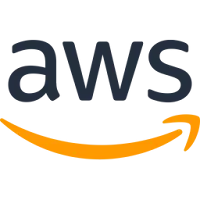Scalable Video Processing pipeline over cloud.
Scalable Video Processing Using AWS ECS, Fargate, Lambda, and S3
Introduction
This guide outlines how to use AWS services to implement an automated, scalable video processing pipeline that converts colored movies to grayscale upon upload to S3 storage.
Goal
Implement a video processing pipeline to convert colored videos to grayscale automatically using serverless computing.
Key Services Used
- AWS Lambda: Serverless compute service for triggering tasks.
- Elastic Container Registry (ECR): To store Docker images.
- Elastic Container Service (ECS) with Fargate: To manage, scale, and deploy processing containers.
- AWS S3: Storage service for input and output videos.
- Python: To write processing code.
- Docker: To create container images.
Workflow
The video processing pipeline follows these steps:
- Upload File to S3: Trigger the pipeline when a file is uploaded to an S3 bucket.
- Lambda Function: Detects the file upload and triggers an ECS task.
- ECS Task: Uses a Docker container to process the video.
- Process Video: Write your own processing method (Here implemented -> motion detection in region of interest).
- Store Output: Upload the processed video back to S3.
Technologies and Services
This project uses the following technologies and services:
- Python Script:
process_video.pyto convert RGB video to grayscale. - Docker: Create a Docker image with the Python script, stored on ECR.
- AWS Lambda: Monitor S3 and trigger ECS tasks.
- ECS with Fargate: To run Docker containers for video processing.
- AWS CLI: To interact with AWS services from the command line.
Setup Steps
Prerequisites
- AWS Account: With sufficient permissions.
- AWS CLI: Installed on the local machine.
S3 Buckets
- Create Buckets:
video-processor-inputandvideo-processor-output. - Settings: Default settings, private access.
Python Script
- Folder Structure: Create a
codefolder withrequirements.txtandprocess_video.pyfiles. - requirements.txt: List Python dependencies.
- process_video.py: Contains the video processing script using OpenCV and Click CLI.
Docker Setup
- Dockerfile: Create in the same folder as the Python script.
- Install Docker: Ensure Docker is installed and running on your machine.
- Build Image: Run commands to build the Docker image, verify with
docker imagescommand.
Elastic Container Registry (ECR)
- Create Repository:
video-processorto store Docker image. - Push Image: Authenticate Docker with ECR, tag and push the image.
Elastic Container Service (ECS) and Fargate
- Get Started with ECS: Use ECS to configure container, task, and cluster.
- Container Definition: Use the URL of Docker image, leave other settings default.
- Task Definition and Service: Set meaningful names and default settings.
- Cluster: Name the cluster and create it.
IAM Roles and Policies
- Create Policies: For S3 read access (input bucket) and write access (output bucket).
- Create Roles: ECS task role with required policies attached.
AWS Lambda Function
- Create Function: Define from scratch with Python 3.9 runtime, S3 read-only permission.
- Add Trigger: S3 bucket events trigger for object create events.
- Add Permissions: Attach ECS full access policy to Lambda function's role.
- Add Code: Update Lambda function with code to trigger ECS tasks.
Testing
- Upload Videos: To the input S3 bucket.
- Monitor Lambda: Check invocations and logs in CloudWatch.
- Check ECS Tasks: Ensure tasks are running and then stopped after processing.
- Output Verification: Download and verify the processed videos from the output bucket.
Considerations and Alternatives
- Limitations: Static Docker images require rebuilding and pushing for code updates, high data transfer costs for large files.
- Alternatives: Explore Kubernetes and AWS Batch for different batch processing solutions.
Conclusion
Outcome: Successfully create an automated, scalable video processing pipeline using AWS services.
Recommendation: Compare performance, portability, and cost of different solutions for future implementations.
Resources
- AWS CLI Installation: Instructions for different operating systems.
- For source code and related documents, please email us.
Stay tuned for more updates on the latest advancements in technology.




Comments
Post a Comment